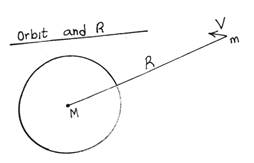Question 8
(a) (i) State Hooke’s Law
(ii) A spring has a length of 0.20 m when a mass of 0.30 kg hangs on it, and a length of 0.75 m when a mass of 1.95 kg hangs on it. Calculate the:
(I) Force constant of the spring;
(II)Length of the spring when it is unloaded.
[g =10 m s-2]
(b) (i) What is diffusion?
(ii) State two factors that affect the rate of diffusion of a substance.
(iii) State the exact relationship between the rate of diffusion of a gas and its density
(c) A satellite of mass, m orbits the earth of mass, M with the velocity, v at a distance
R from the centre of the earth. Derive the relationship between the period T, of orbit and R.
Observation
Part (a): This was one of the popular choice of the candidates on Hooke’s law. Performance was above average.
Part (bi): Most candidates attempted the question but failed to define diffusion using the correct terms.
(ii& iii) Most Candidates perform above average to score full mark high mark.
Part (c): Candidates performance was poor.
The expected response:
(a) (i) Hooke’s Law
The extension produced in an elastic material is directly proportional to the applied force provided the elastic limit of the material is not exceeded
(ii) Calculation of Force Constant (k)
From Hooke’s law
Mg = ke = k(l – lo)
0.3 x 10 = k(0.20 - lo) ………. (i)
1.95 x 10 = k(0.75 - lo) ……… (ii)
From (i) lo = 0.2 - ![]()
From (ii) 19.5 = k [0.75 – (0.2 - ![]() )]
)]
k = 30 Nm-1
lo = 0.2 - ![]()
lo = 0.2 – 0.1
Therefore, unloaded length of spring = 0.1 m
(b) (i) Definition of fusion
Intimate mixing of substance due to random motion of their molecules/particles
(ii) Factors that Affect the Rate of Diffusion
- Temperature of t→he environment
- Density of the substance
- Medium of diffusion
- Concentration gradient
(iii) Relationship Between the Rate of Diffusion of a Gas and its Density
![]()
(c) Derivation of the Relationship Between the Period, T of Orbit and R

![]()
![]()
![]() → T2 α R3
→ T2 α R3
